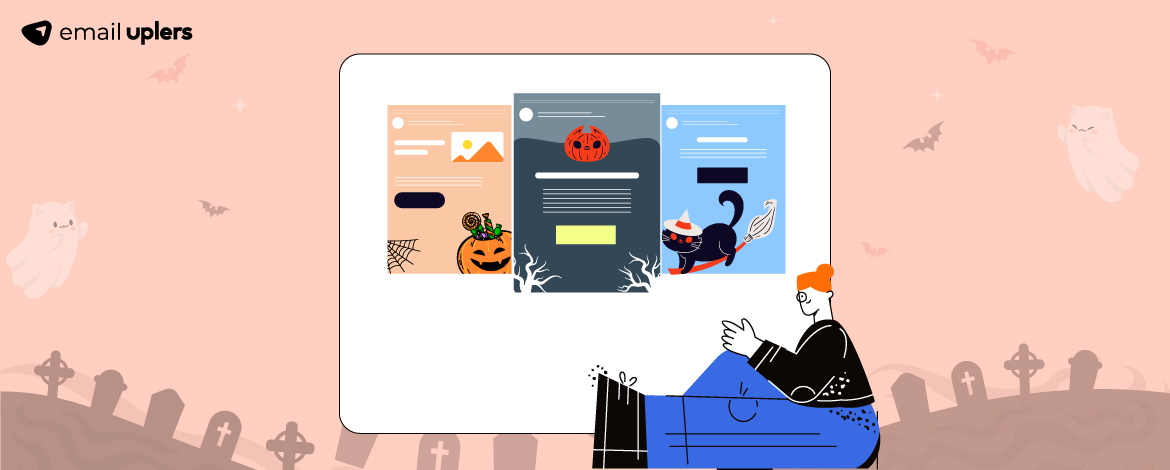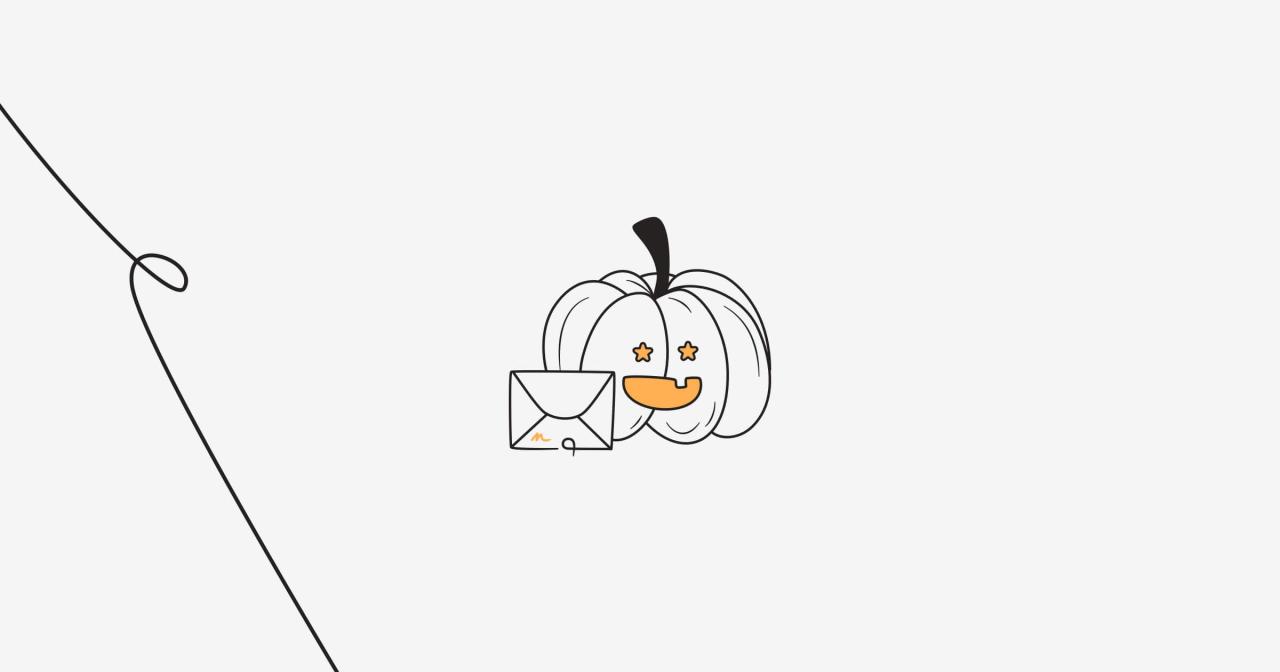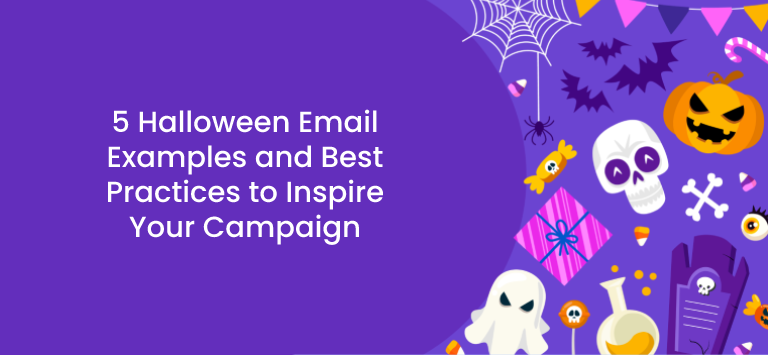Can I put Happy Halloween in a business email? This seemingly simple question opens a Pandora’s Box of considerations regarding professional etiquette, brand image, and workplace culture. The appropriateness of a festive greeting like “Happy Halloween” hinges on several factors, including your recipient, your company’s culture, and the overall context of your communication. Ignoring these nuances could lead to misinterpretations or even damage your professional reputation.
This guide navigates the complexities of holiday greetings in professional emails, providing practical advice and examples to help you make informed decisions. We’ll explore the impact of using “Happy Halloween” on different recipient types—clients, colleagues, and superiors—and offer alternative greetings that maintain professionalism while acknowledging the festive season. We’ll also delve into the role of company culture and brand image in shaping email etiquette, ultimately empowering you to craft emails that are both effective and appropriate.
Appropriateness of “Happy Halloween” in Business Emails
The use of “Happy Halloween” in business emails presents a nuanced challenge, requiring careful consideration of your audience and the overall context. While a seemingly innocuous greeting, its impact can vary significantly depending on the recipient and the nature of your communication. A poorly judged greeting can undermine professionalism and damage relationships.
The potential impact of using “Happy Halloween” hinges heavily on the recipient. Clients might appreciate a lighthearted touch, especially if you have an established, informal relationship. However, a more formal client might find it jarring or unprofessional. Colleagues, depending on your workplace culture, may respond positively to a casual greeting, but a more conservative environment may necessitate a more traditional approach. Superiors, particularly those in senior management positions, often expect a consistently professional tone in all business communications. Using “Happy Halloween” in an email to a superior could be perceived as overly familiar or even inappropriate, depending on your company’s culture and your relationship with that individual.
Situations Where “Happy Halloween” is Appropriate and Inappropriate
Using “Happy Halloween” in a business email requires careful judgment. It can be appropriate in informal settings, such as internal communications among colleagues who share a friendly rapport. For example, a quick email to a colleague coordinating a Halloween office party would be suitable for such a greeting. Conversely, it would be inappropriate to use this greeting in formal communications, such as a client proposal, a complaint resolution email, or a message to a senior executive. Imagine sending “Happy Halloween” alongside a formal contract; the incongruity would likely be jarring and potentially damaging to your professional image. The context is crucial; a festive email to colleagues about an office costume contest differs vastly from a formal sales report.
Alternative Professional Greetings for Halloween
Instead of “Happy Halloween,” consider alternative greetings that maintain professionalism while subtly acknowledging the holiday. Options include a simple “Season’s Greetings,” which is broadly applicable to the fall season, or a more specific “Wishing you a happy and productive week” – a less overtly festive yet friendly alternative. For a more subtle approach, you could incorporate autumnal imagery into your email signature, such as a leaf design or a seasonal quote. This allows for a festive touch without directly referencing Halloween in the salutation.
Formal and Informal Email Greetings for Halloween
| Greeting | Appropriateness | Recipient Type | Potential Impact |
|---|---|---|---|
| Happy Halloween | Informal | Colleagues (informal work environment) | Positive, fosters camaraderie |
| Happy Halloween | Inappropriate | Clients (formal relationship), Superiors | Unprofessional, potentially damaging to reputation |
| Season’s Greetings | Formal/Informal | All recipient types | Neutral, professional, widely acceptable |
| Wishing you a productive week | Formal/Informal | All recipient types | Professional, friendly, avoids holiday-specific language |
Branding and Company Culture Considerations

A company’s brand image and internal culture significantly impact the appropriateness of using informal greetings like “Happy Halloween” in business emails. The decision hinges on aligning the greeting with the established brand personality and the overall communication style fostered within the organization. A mismatch can lead to inconsistencies and potentially damage brand perception.
The choice to include or exclude such greetings necessitates a careful assessment of the target audience and the desired communication tone. A consistent brand voice is crucial for building trust and maintaining professional credibility. Deviating from this established voice, even for a seemingly innocuous greeting, can create dissonance and undermine the carefully cultivated image.
Brand Image and “Happy Halloween” Usage
The suitability of “Happy Halloween” varies dramatically depending on the company’s brand image. A creative agency, known for its playful and innovative spirit, might find the greeting perfectly acceptable, even enhancing its brand personality. The informal tone aligns with the agency’s likely target audience and the creative industry’s generally less formal communication norms. Conversely, a financial institution, projecting an image of stability, seriousness, and professionalism, would likely find the same greeting inappropriate and potentially damaging to its brand reputation. Using “Happy Halloween” in this context could be perceived as unprofessional and undermine the institution’s carefully constructed image of reliability and trustworthiness.
Risks Associated with Informal Greetings
Employing informal greetings in business communication carries several potential risks. These risks include diluting brand consistency, damaging professional credibility, alienating clients or stakeholders who expect a more formal tone, and creating a perception of unprofessionalism or lack of seriousness. The seemingly insignificant choice of a greeting can have a disproportionately large impact on the overall perception of the company and its professionalism. In a globalized business environment, cultural sensitivity is paramount, and what might be acceptable in one culture could be considered inappropriate in another. Ignoring these nuances can lead to misunderstandings and damage relationships.
Hypothetical Scenario: Detrimental Use of “Happy Halloween”
Imagine a prestigious law firm, renowned for its meticulous attention to detail and its conservative approach to client communication, sending a mass email to its clients with the subject line “Happy Halloween!” This would likely be perceived as highly unprofessional and inappropriate by many clients, potentially undermining the firm’s carefully cultivated image of competence and seriousness. The resulting damage to the firm’s reputation could outweigh any perceived benefit of a seemingly innocuous seasonal greeting. This scenario highlights the importance of considering the specific context and the potential consequences before employing informal greetings in business communications. A seemingly minor detail can have significant and unforeseen repercussions.
Email Recipient Relationships

The appropriateness of a “Happy Halloween” greeting in a business email hinges significantly on your relationship with the recipient. Different professional relationships demand varying levels of formality, and a seemingly innocuous greeting can easily misrepresent your intentions or damage professional rapport if not carefully considered. Understanding these nuances is crucial for maintaining effective and respectful communication.
The choice of greeting directly reflects the level of familiarity and professional distance between you and the recipient. Ignoring these subtleties can lead to misinterpretations, potentially impacting your professional image and the overall effectiveness of your communication.
Client Relationships and “Happy Halloween” Greetings
The use of “Happy Halloween” with clients is highly dependent on the existing relationship. With long-standing clients you know well, a casual greeting like “Happy Halloween!” might be perfectly acceptable, particularly if previous interactions have established a comfortable, informal tone. However, with newer clients or those with whom you maintain a more formal professional relationship, a more traditional greeting such as “Dear [Client Name],” is always the safer option. Using “Happy Halloween” in this context might appear overly familiar and unprofessional, potentially jeopardizing the business relationship.
Impact of Recipient Seniority and Position
Several factors should be weighed when selecting an appropriate greeting based on the recipient’s seniority and position within the company.
- Seniority: A more formal greeting (“Dear Mr./Ms. [Last Name]”) is generally preferred when emailing senior executives or clients, regardless of your existing relationship. A casual greeting could be perceived as disrespectful or unprofessional.
- Department: The department the recipient works in can influence the appropriate level of formality. For example, a more casual greeting might be acceptable within a creative or marketing department, compared to a more formal approach with those in finance or legal.
- Company Culture: Company culture plays a significant role. Some organizations have a more relaxed and informal atmosphere, while others maintain a strictly formal tone. Observing and adapting to the prevailing company culture is crucial.
- Previous Interactions: Past email exchanges can offer valuable insights into the preferred communication style of the recipient. Referencing previous interactions can help determine the most suitable greeting.
Example Emails: Formal vs. Informal Greetings
Formal Email to a Senior Client:
Subject: Project Update – [Project Name]
Dear Mr. Smith,
I hope this email finds you well. This email is to provide a brief update on the progress of the [Project Name] project…
Sincerely,
[Your Name]
Informal Email to a Close Colleague:
Subject: Halloween Candy!
Hey Sarah,
Happy Halloween! Just wanted to let you know I brought in some Halloween candy for everyone…
Best,
[Your Name]
The formal email to Mr. Smith maintains a professional tone, appropriate for a senior client. The casual email to Sarah reflects a close working relationship and utilizes a friendly, informal greeting. The effectiveness of each email depends on its alignment with the existing relationship and the overall communication context. The tone and language used in each example demonstrate the importance of tailoring your communication style to the recipient.
Alternative Greetings and Professionalism: Can I Put Happy Halloween In A Business Email

Maintaining a professional tone in business emails is crucial, even during festive periods like Halloween. While “Happy Halloween” might be acceptable in some informal settings, a more conservative approach is generally recommended for professional communication to ensure a consistent brand image and avoid misinterpretations. Choosing appropriate alternatives demonstrates respect for your recipients and maintains a professional demeanor.
The key is to strike a balance between acknowledging the season and preserving the formality expected in business correspondence. A subtle nod to the holiday can create a more engaging and personable email without sacrificing professionalism. This approach builds rapport while maintaining a business-like tone, enhancing the overall effectiveness of your communication.
Alternative Professional Greetings for Halloween
Several alternatives offer a festive yet professional approach to greeting recipients in business emails around Halloween. These options avoid the informality of “Happy Halloween” while still subtly acknowledging the season.
- Season’s Greetings:
- Best wishes:
- Warm regards:
- Hope you are having a productive week:
- Wishing you a productive week ahead:
This is a versatile and widely accepted greeting suitable for various occasions, including Halloween. It’s formal enough for any business context.
A simple and universally appropriate greeting, conveying a positive and professional tone.
This option expresses friendliness while maintaining professionalism. It works well in various business settings.
Focuses on work-related aspects, indirectly acknowledging the time of year without explicitly mentioning Halloween.
Similar to the above, this maintains a professional tone while being subtly festive if the email is sent at the start of the week.
Maintaining a Festive Tone Professionally
Subtlety is key to maintaining a professional yet festive tone. Instead of overtly mentioning Halloween, consider using autumnal imagery or themes in your email’s content or design. For instance, a subtle autumnal color palette in your email signature or a brief mention of enjoying the fall season can create a festive atmosphere without being overly casual. This allows you to participate in the spirit of the season without disrupting the professional nature of the communication. Consider using phrases such as “enjoying the crisp autumn air” or “looking forward to the upcoming holiday season.”
Appropriate Halloween Email Closings
The closing of your email should mirror the professionalism of your greeting. Avoid overly casual closings like “Have a spooky day!” Instead, opt for professional yet friendly alternatives.
- Sincerely,
- Regards,
- Best regards,
- Kind regards,
A classic and always appropriate closing.
A slightly less formal but still professional option.
Conveys warmth and professionalism.
Similar to “Best regards,” but perhaps slightly warmer.
Professional Greetings for Various Occasions
A consistent approach to greetings across various occasions helps maintain professionalism and brand consistency.
- General Business Communication: “Dear [Name],” “Good morning/afternoon,” “Best regards,” “Sincerely,”
- Holiday Greetings (Christmas, Hanukkah, Kwanzaa, etc.): “Season’s Greetings,” “Warmest wishes for the holiday season,” “Happy Holidays,”
- Halloween (Professional Context): “Season’s Greetings,” “Best wishes,” “Warm regards,” “Hope you are having a productive week,”
- Thanksgiving: “Happy Thanksgiving,” “Wishing you a happy Thanksgiving,” (Consider context – some companies may avoid overtly religious greetings)
- Informal Team Communication: “Hi [Name],” “Hey [Name],” “Cheers,” “Thanks,” (use sparingly and appropriately)
Visual Elements in Halloween-Themed Emails
Integrating Halloween visuals into business emails requires a delicate balance. Overly enthusiastic designs can appear unprofessional, while a complete absence misses a valuable opportunity to engage with clients during a festive season. The key lies in subtlety and appropriateness, aligning visual elements with your brand’s personality and the recipient’s expectations.
The successful incorporation of Halloween-themed visuals hinges on thoughtful design choices that prioritize professionalism. A poorly chosen image or overly animated GIF can detract from your message and damage your brand’s image. Conversely, a well-executed design can create a positive and memorable impression, fostering goodwill and strengthening client relationships.
Subtly Halloween-Themed Email Signatures
A subtly Halloween-themed email signature can be a simple yet effective way to incorporate festive elements without compromising professionalism. Instead of a large, distracting image, consider a small, high-quality icon—perhaps a friendly ghost or a miniature pumpkin—placed discreetly within the signature. The icon should be well-integrated into the overall design and maintain the same color palette as the rest of the signature. Alternatively, a simple change of the signature’s closing line to “Happy Halloween!” (or a similar, brief greeting) could suffice. The key is to keep it minimal and tasteful, avoiding anything that could be perceived as overly childish or distracting. Imagine a sophisticated, dark-orange colored pumpkin icon next to the sender’s name, seamlessly blending with a professional font and color scheme. This creates a festive touch without disrupting the overall professional appearance of the email.
Design Considerations for Halloween-Themed Visuals in Business Emails
When considering Halloween-themed visuals for business emails, several design principles should guide your choices. First, prioritize high-quality images or GIFs. Pixelated or low-resolution visuals appear unprofessional and detract from the overall message. Second, select images or animations that align with your brand’s personality and target audience. A playful animation might suit a younger demographic or a more casual brand, while a sophisticated, understated image would be more appropriate for a corporate environment. Third, maintain consistency with your brand’s color palette and overall design language. The Halloween elements should complement your existing branding, not clash with it. For example, a company with a predominantly blue and white color scheme might use a subtly orange-accented image rather than one with bright, clashing colors. Finally, ensure that the visuals are not distracting or overwhelming. The primary focus should remain on the email’s content, with the visuals serving as a subtle enhancement rather than a focal point.
Benefits and Drawbacks of Using Halloween-Themed Images or GIFs in Business Emails, Can i put happy halloween in a business email
Using Halloween-themed images or GIFs in business emails offers potential benefits, but also presents drawbacks. On the positive side, they can create a memorable and engaging experience for recipients, fostering positive brand associations and strengthening client relationships. A well-executed design can demonstrate a company’s playful side and enhance its human connection with its audience. However, the drawbacks include the risk of appearing unprofessional or insensitive if the visuals are poorly chosen or inappropriate for the target audience. Overly animated or distracting GIFs can detract from the email’s message and irritate recipients. Furthermore, some recipients might find such visuals irrelevant or even offensive, potentially harming your brand’s image. Therefore, a careful assessment of your brand’s personality, target audience, and the overall context is crucial before incorporating any Halloween-themed visuals. A successful implementation requires a balanced approach, prioritizing subtle and tasteful design over flashy, potentially off-putting elements.






